Facility and equipment
The cages
The original cages were mainly rectangular wooden or metal frames
with plastic drum floats. However, these have been sequentially
replaced with circular cages constructed with high density
polyethylene tubes. The moorings use concrete weight anchors and the
nylon net bags are suspended from these. As of 2014 the standard
configuration was an 18m diameter cage with a net depth of 6m. Net
mesh size is adjusted according to the size of the fish. One inch
mesh nets are used for up to 17g fish, after which, two inch mesh
nets are used. Overhead netting is also installed to protect against
bird predation.
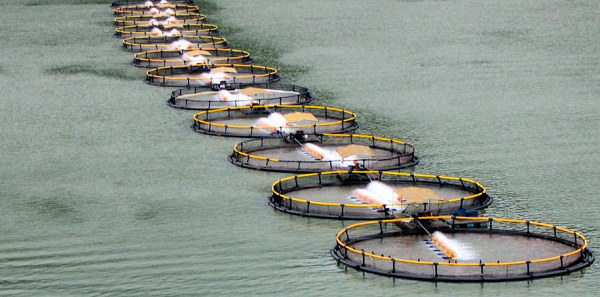
Filleting
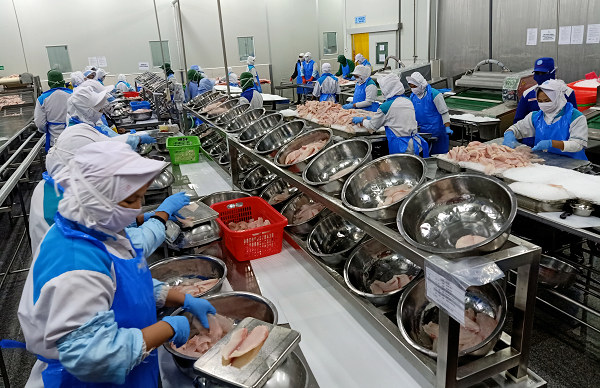
The Regal Springs Tilapia are marketed as loins, fillets, frozen and portions and precuts and as whole fish.
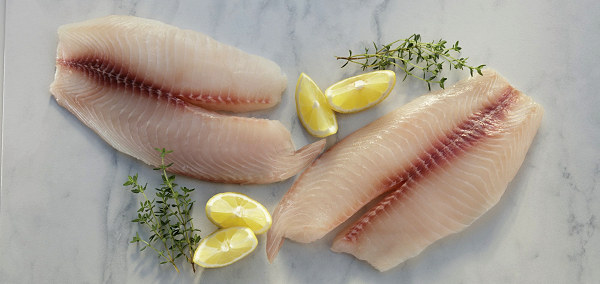
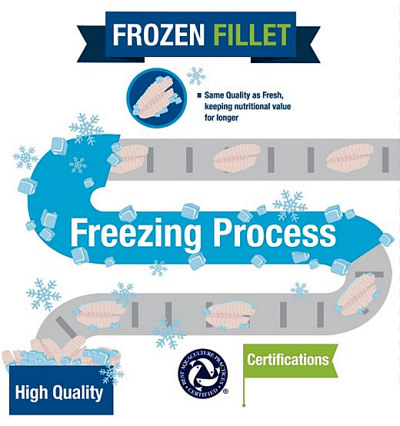
Feeding plant
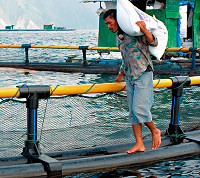 For optimal health and development, Regal Springs
naturally Tilapia are fed a high-quality, vegetable-based diet, consisting of
beans, cereals and grains. The feed is being produced in own feed
mills. The method method for raising tilapia ensures the fish do not
eat the algae, mud or shallow-pond waste wild-caught fish are
exposed to.
For optimal health and development, Regal Springs
naturally Tilapia are fed a high-quality, vegetable-based diet, consisting of
beans, cereals and grains. The feed is being produced in own feed
mills. The method method for raising tilapia ensures the fish do not
eat the algae, mud or shallow-pond waste wild-caught fish are
exposed to.
Water Quality
Lake Toba is one of the largest, and also one of the fifteen deepest, lakes in the world. The water quality in the lake was found to be good until 1996 but it has deteriorated since mid 1990s. This process is difficult to explain in such a large and deep lake. The depth and stratification of the lake play a major role. Key indicators, however, such as dissolved oxygen, chlorophyll-a, and transparency, all reflect increasing levels of eutrophication. This is a process through which excessive amounts of dissolved nutrients stimulate the growth of aquatic plants. These can manifest in nuisance algal blooms and reduce oxygen levels, causing massive fish kills and other persistent environmental issues.
Aquaculture constitutes point-sources of pollution and accounts for 68 percent of total phosphorous and 76 percent of total nitrogen emissions into Lake Toba. Aquaculture development since the 1990s has culminated in a production capacity of more than 80,000 tons/fish/year in 2015. The main emissions of nitrogen and phosphorous come from fish feed, fish manure, and fish carcasses. Phosphorous emissions doubled to an estimated 2,124 tons between 2012 and 2016. This is equivalent to wastewater emissions from 2.3 million people.
The Government of Indonesia has prepared an integrated, cross-ministerial and cross-sector approach for the future development of the utilization of Lake Toba. This includes the development of comprehensive solutions for improved management and monitoring of the lake’s water quality. To support the government, the comprehensive assessment Improving Water Quality in Lake Toba, Indonesia (World Bank, 2018) has identified the following four recommendations:
- The long-term sustainable development and implementation of an Integrated Lake Basin Management Platform. This requires adequate resources and enhanced coordination across the responsible agencies.
- Improvements in water quality can only be achieved through enforcement of policy measures relating to the carrying capacity of Lake Toba.
- A comprehensive and integrated water quality monitoring plan with a shared information management platform is required to assess the outcomes of any intervention and adapt to changing circumstances.
- Cooperative institutional mechanisms are needed to provide an interagency platform and the enabling environment for the integrated management of Lake Toba.
Certification
Regal Springs is partner of the Global Sustainable Seafood Initiative (GSSI). GSSI provides a single recognition of regional and global seafood certification schemes that meet the UN Food and Agriculture Organizations’ (FAO) Code of Conduct for Responsible Fisheries (CCRF) and FAO Ecolabelling Guidelines. Regal Springs is proud to be certified to both the Aquaculture Stewardship Council and the Global Aquaculture Alliances Best Aquaculture Practice Standards which meet the GSSI benchmark requirements.